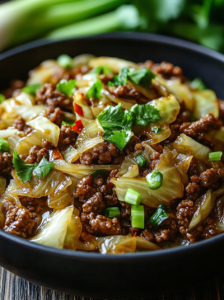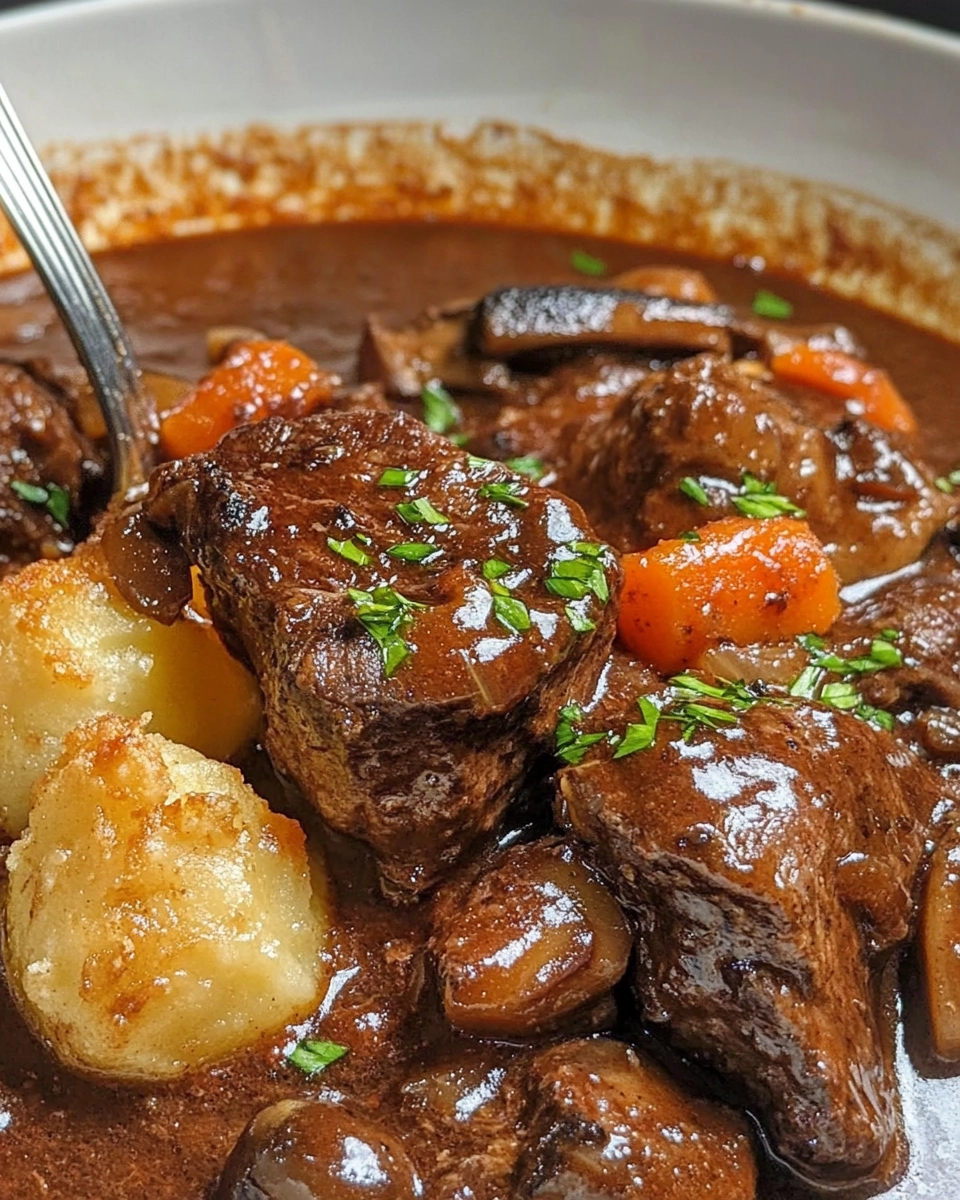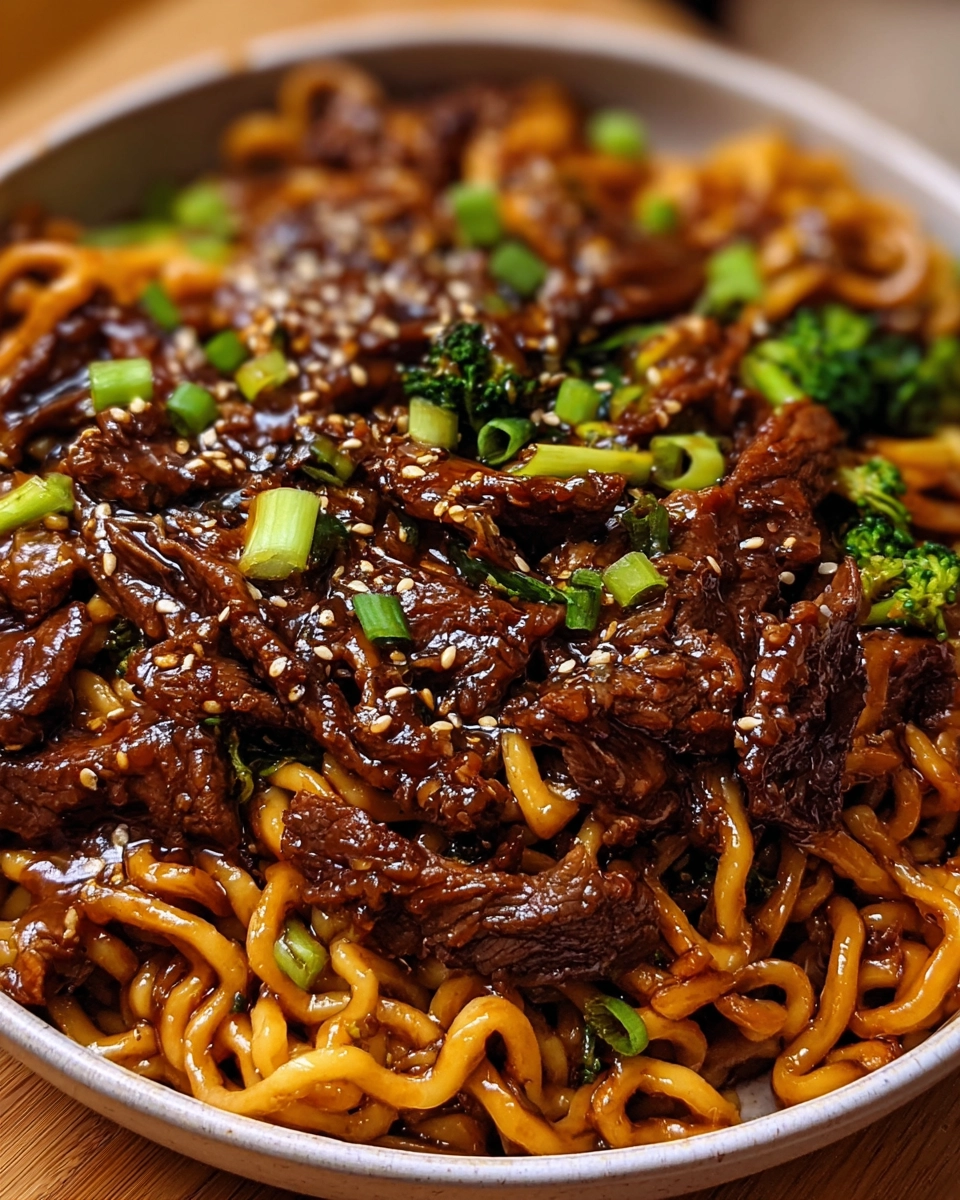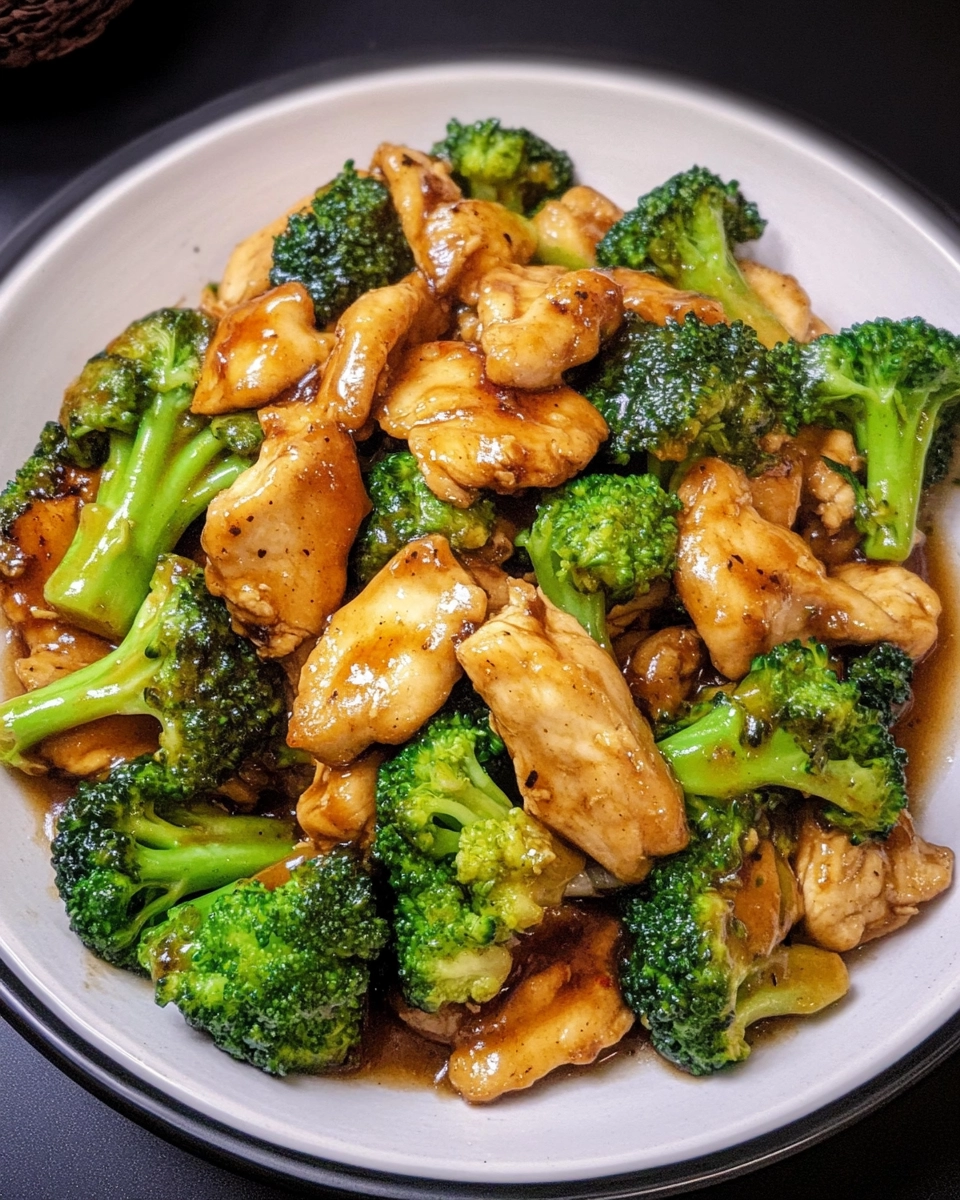Savory Soy-Glazed Mongolian Beef Bowl with Garlic Cabbage is one of those dishes that brings everything I love about food into one big, beautiful bowl—bold flavor, satisfying textures, and just enough comfort to make you close your eyes after the first bite.
I’m Maggie Rae Donovan, a 42-year-old home cook living just outside of Asheville, North Carolina. I’m not a chef. I didn’t go to culinary school. You won’t find my face on TV or in glossy cookbooks. But I’ve spent the last 25 years in my little kitchen, stirring pots, chasing flavors, and letting mistakes become magic.
My journey started like many Southern stories do—in my grandmother’s kitchen. She didn’t measure with spoons but with instinct, and butter flowed like sweet tea at a picnic. I remember being six, standing on a chair, mesmerized as she folded biscuit dough like it was sacred. And honestly, it kind of was. That kitchen held more than just food—it held connection, comfort, and tradition.
Life happened. I became a nurse, raised two daughters, and moved more times than I can count. But through every chapter, I cooked. When times were tough, I got creative. When we were celebrating, I made everything from scratch. Food became the one steady rhythm in a life full of change.
Some of my favorite dishes were born from “oops” moments. Like the time I used pretzels instead of breadcrumbs—now we call it “crunchy chicken,” and it’s a family favorite. Cooking taught me that perfection isn’t the goal—connection is.
These days, I’m all about sharing what I know. I post my favorite recipes on my blog, show up to potlucks with dishes that get people talking, and sometimes, I just leave warm banana bread on a neighbor’s porch. Because food isn’t just food. It’s how I show up, with love and maybe a little butter.
And this dish right here? It’s my latest obsession. A Savory Soy-Glazed Mongolian Beef Bowl with Garlic Cabbage—a recipe that takes a Chinese-American classic, adds a Southern sense of soul, and makes dinner feel like a hug.
Check out how I build flavor in quick dinners like this Savory Ground Beef Bell Pepper Stir-Fry
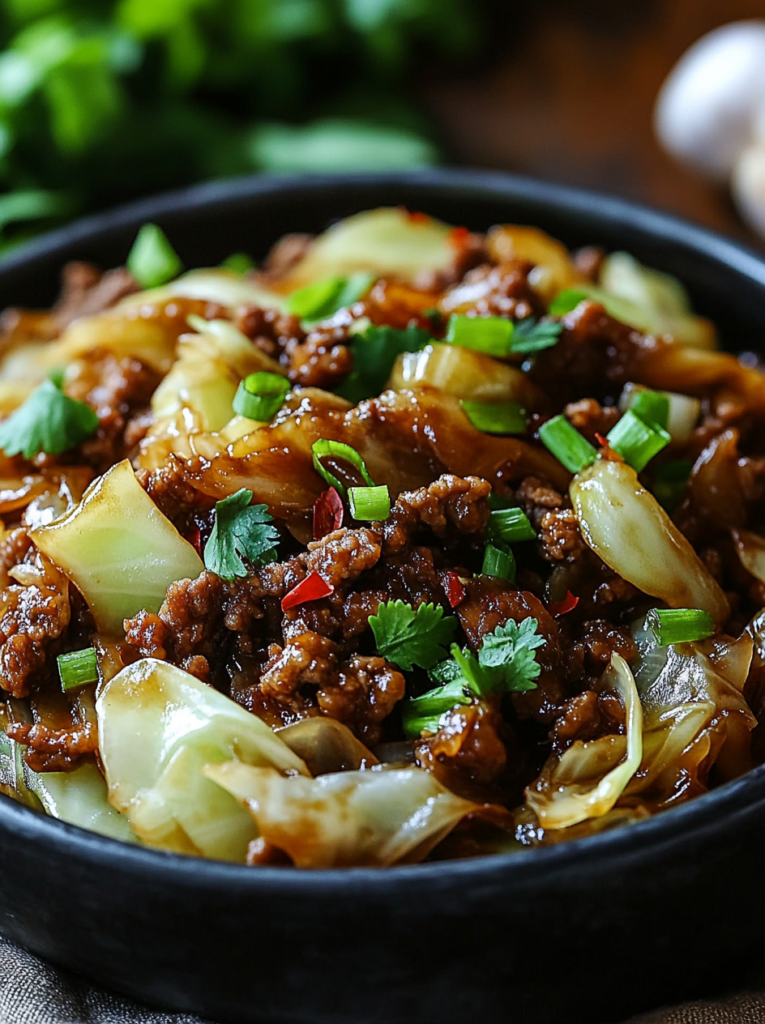
Table of Contents
What Makes Mongolian Beef So Special?
It’s Sweet, Savory, and Comforting All at OnceMongolian beef isn’t Mongolian by origin—it’s an American Chinese restaurant classic. What makes it special is its rich soy glaze, loaded with garlic, ginger, and brown sugar. The result? A sweet-salty umami bomb that clings to thinly sliced, tender beef.
The sauce caramelizes as it cooks, wrapping each piece of beef in a sticky, glossy coat that tastes like takeout—but better. In this version, I stir-fry shaved steak until it crisps at the edges and toss it in a deep, savory glaze that practically begs to be spooned over rice.
Looking for another flavorful skillet dinner? Don’t miss our Savory Stir-Fried Beef Garlic Soy Bok Choy
Garlic Cabbage: The Southern Sidekick You Didn’t Know You Needed
You can’t serve Mongolian beef without something green. Instead of classic broccoli, I go with garlic-sautéed cabbage—a nod to Southern fried cabbage but with an Asian twist. It’s tender but still crisp, and the garlic brings just the right amount of kick to balance the richness of the beef.
This side not only adds nutrition but absorbs the sauce beautifully, soaking up every last drop and making sure your rice bowl is never dry.
Fusion Done Right
This dish is a love letter to flavor fusion. You’ve got the Asian-inspired glaze, Southern-style cabbage, and a down-home appreciation for hearty, soul-warming food. It’s easy enough for a weeknight and impressive enough for company.
It’s the kind of meal that makes your kitchen smell incredible—and makes your family linger at the table just a little longer.
Essential Ingredients for the Perfect Mongolian Beef Bowl
The Star: Choosing the Right Cut of Beef
The heart of this dish is thinly sliced beef that cooks quickly and stays tender under a soy glaze. The best cuts for Mongolian beef are:
- Flank steak – lean and flavorful, easy to slice thin across the grain
- Skirt steak – slightly fattier, with bold beefy flavor
- Shaved beef – found pre-cut at many grocery stores, perfect for quick cooking
- Sirloin or ribeye – for a more luxurious feel
Tip: Freeze the beef for 15–20 minutes before slicing. It firms up just enough to help you cut thin, even strips.
Want a great stir-fry technique? Discover more in our Healthy Chinese Ground Beef Cabbage Stir-Fry Stack
The Glaze: What Is Mongolian Beef Sauce Made Of?
The beauty of this sauce is in its simplicity and balance. It’s a sweet-savory glaze that coats the beef and thickens just enough to be spoon-worthy. Here’s what goes into it:
| Ingredient | Role in Flavor |
|---|---|
| Soy sauce | Deep, salty umami base |
| Brown sugar | Sweet caramel depth |
| Garlic | Sharp, savory kick |
| Ginger | Warmth and subtle heat |
| Cornstarch slurry | Helps thicken the sauce for cling |
| Sesame oil | Earthy aroma and richness |
| Optional red pepper flakes | For those who like a kick |
Variation: Add a splash of hoisin sauce or rice vinegar to change the flavor dimension. A drizzle of honey can also add shine and complexity.
The Backbone: Garlic Sautéed Cabbage
I like to think of garlic cabbage as the unsung hero of this bowl. It cuts the richness of the beef while adding a subtle sweetness and crunch.
Best Cabbage Options:
- Napa cabbage – soft, mildly sweet, and perfect for stir-frying
- Green cabbage – hearty and affordable, adds great texture
- Savoy cabbage – tender and full of ridges to trap flavor
Flavor tip: Sauté sliced cabbage in sesame oil and minced garlic, then season with salt, soy sauce, and a splash of rice vinegar for brightness.
The Base: Choosing the Right Rice
A good base makes every bowl better. Try:
- Jasmine rice – aromatic and fluffy
- Short-grain white rice – sticky and satisfying
- Brown rice – nutty and fiber-rich
- Cauliflower rice – great for a lighter, low-carb option
The Finishing Touches: What Makes It Shine
Top your Mongolian beef bowl with:
- Scallions – sliced thin for freshness
- Toasted sesame seeds – nutty crunch
- Chili oil or crushed peanuts – for extra texture and spice
- Fried shallots – crispy, savory garnish
These small touches make the dish feel complete and restaurant-worthy.
How to Make Savory Soy-Glazed Mongolian Beef Bowl Step-by-Step
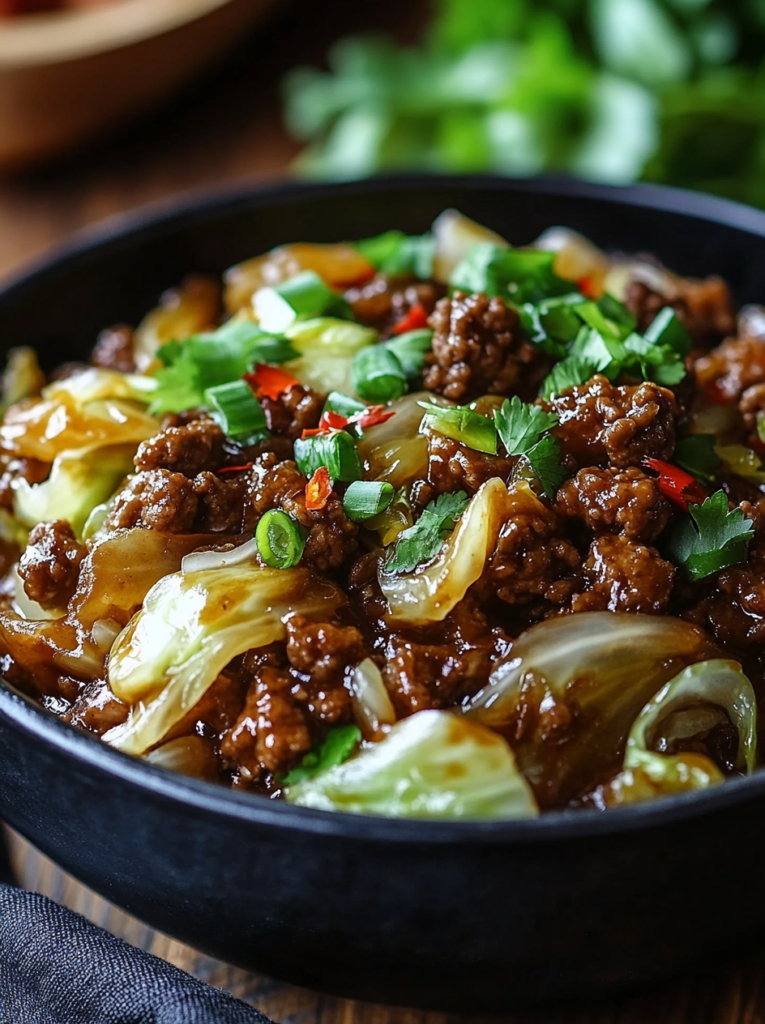
Step 1: Prep All Ingredients Before Cooking
Mongolian beef comes together quickly, so having everything chopped, marinated, and ready to go is key.
Here’s your prep list:
- Thinly sliced beef (flank, skirt, or shaved)
- Minced garlic and ginger
- Shredded or chopped cabbage
- Soy sauce, brown sugar, sesame oil, cornstarch
- Cooked rice (keep warm)
- Garnishes: scallions, sesame seeds, optional chili oil
Want more quick dinners that come together in a flash? Try our Savory Onion Beef Fried Rice with Tender Beef Strips
Step 2: Make the Mongolian Sauce
In a small bowl, whisk together:
- ½ cup soy sauce
- ⅓ cup brown sugar
- 2 tsp sesame oil
- 1 tbsp minced garlic
- 1 tbsp grated fresh ginger
- ¼ cup water
- 1 tbsp cornstarch mixed with 2 tbsp water (slurry)
Set this aside—it’ll thicken into a glossy glaze once it hits the pan.
Step 3: Sear the Beef
In a large skillet or wok, heat 1 tbsp oil over medium-high heat.
Add the sliced beef in a single layer. Let it sear undisturbed for 1–2 minutes before stirring. You want those crispy edges!
Cook for about 4–5 minutes total, until the beef is browned but still juicy. Remove it from the pan and set aside.
Step 4: Stir-Fry the Garlic Cabbage
In the same pan, add a little more oil and toss in:
- 4 cups sliced cabbage (Napa or green)
- 2–3 minced garlic cloves
Sauté for 3–4 minutes, stirring often, until the cabbage is wilted but still slightly crisp. Season with 1 tsp soy sauce and a pinch of pepper. Add a splash of rice vinegar for brightness, if desired.
Remove from pan and set aside.
Don’t miss our comforting veggie sides like this Fresh Pickled Cucumber Salad, a great pairing with bold beef dishes.
Step 5: Glaze the Beef
Return the cooked beef to the pan over medium heat.
Pour in the Mongolian sauce and bring it to a simmer. Stir until the sauce thickens and coats the beef—this should take about 2–3 minutes.
The sugars will caramelize slightly, giving you that signature shiny, sticky glaze.
Step 6: Assemble Your Bowl
Time to build your masterpiece. In each bowl, layer:
- A scoop of warm rice
- A generous serving of garlic cabbage
- Glazed Mongolian beef right on top
- Sprinkle with scallions and sesame seeds
- Optional: drizzle chili oil or top with crispy shallots
Every bite delivers sweet-savory beef, garlicky cabbage, and the satisfying softness of rice.
Step 7: Serve Immediately
This dish is best hot and fresh. Serve with chopsticks or a big spoon—either way, it’s going to disappear fast.
Customizing Mongolian Beef Bowls for Every Lifestyle
Want It Gluten-Free? No Problem
Traditional soy sauce contains wheat, but you can still enjoy this dish gluten-free with easy swaps:
- Use tamari or coconut aminos instead of soy sauce. Both offer that deep umami flavor without the gluten.
- Double-check your cornstarch and other sauces (like hoisin, if you use it) to ensure they’re gluten-free.
Everything else—beef, cabbage, garlic, ginger—is naturally gluten-free and perfect for a safe, delicious meal.
Going Low-Carb or Keto? We Got You
If you’re watching your carbs but still craving the sticky, savory goodness of Mongolian beef, just make a few tweaks:
- Swap white rice for cauliflower rice or shredded cabbage as your base.
- Reduce or eliminate the brown sugar. Instead, use monk fruit sweetener or erythritol for a low-carb glaze.
- Boost healthy fats by cooking in avocado or sesame oil and topping with chopped nuts or seeds.
You’ll still get the same satisfaction, just lighter and leaner.
Looking for another nutrient-packed low-carb idea? Try our Chicken Spinach Mushroom Low-Carb Oven Dish.
Vegetarian or Plant-Based? You’ll Still Love It
You don’t need beef to enjoy the sauce and cabbage combo. Here’s how to make a plant-based Mongolian bowl:
- Use tofu, tempeh, or mushrooms in place of beef. Pan-fry until golden and crispy before glazing.
- For a protein boost, add edamame, chickpeas, or even marinated seitan.
- Veganize the glaze by using plant-based hoisin or leaving out any fish sauce or oyster sauce variants.
Don’t skip the garlic cabbage—it pairs beautifully with earthy veggies and soaks up sauce like a dream.
Need a High-Protein Bowl?
For athletes or anyone trying to build muscle, this dish is easy to bulk up:
- Add a second protein source like a soft-boiled egg, grilled chicken, or black beans
- Use lean flank steak and double the portion size
- Serve over quinoa for a protein-rich grain alternative
- Stir in sautéed spinach or bok choy for added vitamins and minerals
Family-Friendly Tips for Picky Eaters
Got kids or spice-shy eaters? No problem:
- Serve the Mongolian beef glaze on the side as a dipping sauce
- Keep cabbage and rice separate so little ones can pick and choose
- Skip the red pepper flakes and let grown-ups add heat to their own bowls
- Add a touch more brown sugar to the sauce for a sweeter, milder finish
This is one of those recipes that’s infinitely flexible, letting every family member find their own flavor groove.
The Story Behind Mongolian Beef and Why It Stands Out
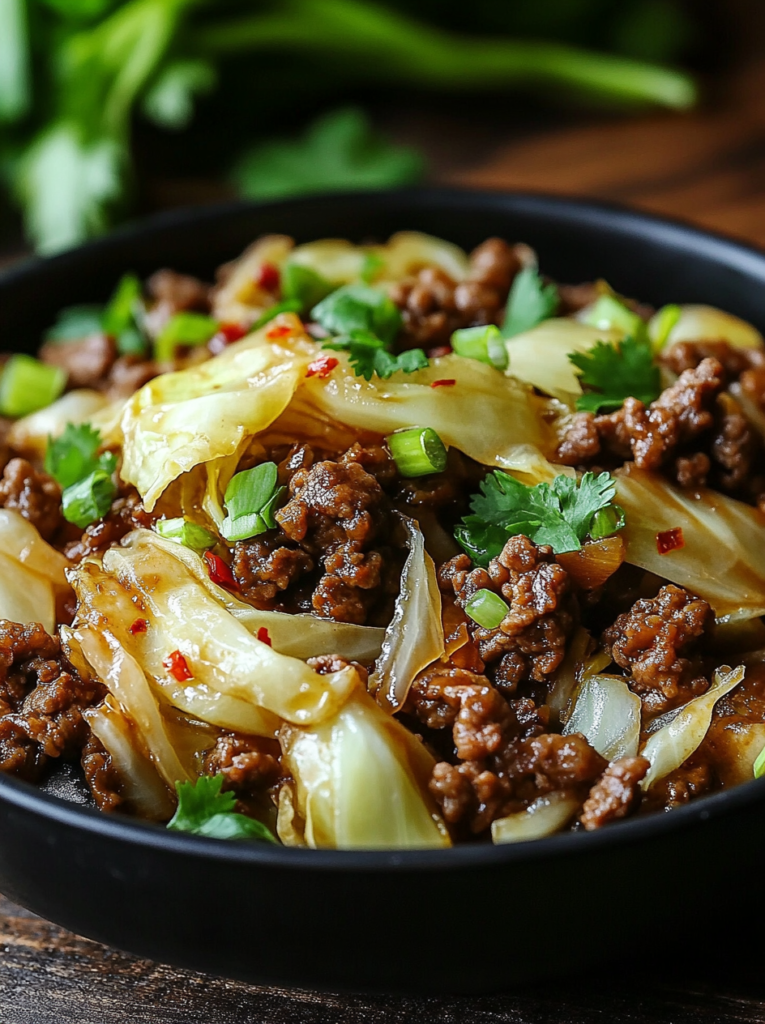
What Is Special About Mongolian Beef?
Mongolian beef is beloved not for its complexity, but for its balance of sweet, savory, and umami-rich flavors. What sets it apart is the deep caramelization of the sauce—made with brown sugar and soy sauce—that wraps each piece of tender beef in a glossy, sticky glaze.
It’s a classic Chinese-American dish, usually made with flank steak, and it gained popularity in U.S. restaurants during the rise of fast-casual Asian cuisine. Unlike spicy Szechuan dishes, Mongolian beef is all about comforting richness with a hint of garlic and ginger warmth.
Looking for another comforting Asian-American fusion idea? Try our Creamy Garlic Parmesan Tortellini Chicken Broccoli.
What Is Mongolian Beef Sauce Made Of?
The sauce typically includes:
- Soy sauce – the salty backbone
- Brown sugar – for sweetness and stickiness
- Garlic and ginger – to balance the flavor and add depth
- Cornstarch slurry – for thickening
- Optional sesame oil or hoisin – for aromatic richness
This sauce thickens quickly, clings to beef like a dream, and caramelizes beautifully in a hot pan. It’s the reason people crave Mongolian beef.
What’s the Difference Between Mongolian Beef and “Normal” Beef Dishes?
“Mongolian beef” isn’t a traditional Mongolian dish—it’s more of a restaurant-style stir-fry, created to suit American tastes with bold sauce and tender meat. Compared to regular beef stir-fry or teriyaki, Mongolian beef:
- Uses more sugar for a sweeter finish
- Is thicker and stickier in texture
- Often features crispier beef due to pan-searing or light battering
- Uses simpler veggies or none at all, focusing on the meat
It’s also quicker than many traditional dishes—great for busy weeknights or meal prepping.
What Is Another Name for Mongolian Beef?
There’s no direct alternate name, but in some restaurants, you might find it labeled as:
- Soy-glazed beef stir-fry
- Sweet soy beef
- Or simply Asian beef bowl
In this recipe, we’ve added garlic cabbage and jasmine rice to create a full Asian-style rice bowl that hits every note—savory, sweet, garlicky, and satisfying.
How Garlic Cabbage Brings a Southern Touch
In Southern cooking, cabbage is a comfort staple—whether fried, stewed, or sautéed. By pairing garlic cabbage with Mongolian beef, we’re blending two comfort traditions:
- The bold, umami-rich stir-fry flavors of Chinese-American cuisine
- The soulful, buttery simplicity of Southern vegetables
It’s a match made in skillet heaven. You get texture, flavor, and just enough crunch to balance the richness of the beef.
Don’t miss our other vegetable-forward comfort recipes like Savory Fried Cabbage with Crispy Bacon and Sweet Onions.
Make-Ahead Tips and Storage for Mongolian Beef Bowls
Why This Dish Is Perfect for Meal Prep
The beauty of a Savory Soy-Glazed Mongolian Beef Bowl with Garlic Cabbage is that it holds up exceptionally well for leftovers and advance prep. The glaze stays sticky and flavorful, the beef doesn’t dry out, and the garlic cabbage keeps its texture and bite.
Whether you’re cooking for one or feeding a family all week, this recipe was made for your prep game.
Batch Cooking: What to Make Ahead
Start by cooking each component separately and store them in the fridge in airtight containers. Here’s how:
Mongolian Beef
- Cook fully and cool before storing
- Keeps well in the refrigerator for up to 4 days
- Can be frozen for up to 2 months (thaw overnight before reheating)
Garlic Cabbage
- Best stored in a glass container to prevent smells absorbing
- Keeps its texture for up to 3 days
- Tastes even better when quickly reheated in a skillet with a drop of sesame oil
Rice
- Make a large batch of jasmine, brown, or cauliflower rice
- Store in portion-sized containers
- Add a splash of water before microwaving to bring back moisture
Assembling Lunches and Bowls
Want ready-to-eat meals? Use compartment-style meal prep containers to build full bowls in advance.
Layer like this:
- Bottom: ½ cup rice
- Middle: ½ cup garlic cabbage
- Top: ½ cup Mongolian beef
- Side container: fresh scallions or sauce drizzle (optional)
Sprinkle sesame seeds and scallions just before eating for the freshest flavor.
Looking for more prep-friendly comfort dishes? Don’t miss our Rich Creamy Chicken Bacon Mushroom Stroganoff.
Reheating Without Losing Flavor
Here’s how to bring your leftovers back to life:
- Microwave method: Cover loosely with a damp paper towel. Microwave 1½ to 2 minutes. Stir and heat another 30 seconds if needed.
- Skillet method: Heat a small amount of oil in a pan, toss in beef and cabbage, and sauté over medium heat for 4–5 minutes until warmed through.
- Oven method: Cover with foil and bake at 350°F for 10–15 minutes.
Avoid overheating the beef—it’ll stay more tender with gentle reheating.
Freezer Tips for Busy Nights
This recipe freezes well! Let all components cool fully before freezing.
- Use freezer-safe zip bags or containers
- Label with the date
- For best results, freeze beef and cabbage separately
Reheat straight from frozen in a skillet with a splash of water or let thaw in the fridge overnight for next-day ease.
Nutritional Value and Health Benefits of Mongolian Beef Bowls
A Balanced Bowl of Comfort and Fuel
While Mongolian beef might feel like an indulgence with its sweet, sticky sauce, when paired with garlic cabbage and jasmine rice, it becomes a balanced, nourishing meal. The dish provides a solid combination of protein, fiber, healthy fats, and complex carbs—perfect for weeknights when you want something comforting but still wholesome.
Let’s break it down.
Estimated Macronutrient Breakdown (Per Serving)
| Nutrient | Approximate Amount |
|---|---|
| Calories | 500–650 kcal |
| Protein | 28–35g |
| Carbohydrates | 40–50g |
| Fat | 20–25g |
| Fiber | 4–6g |
Your final totals will vary depending on the cut of beef, amount of sugar, and type of rice used. But even with a sweet glaze, this dish offers strong nutritional value.
Lean Protein for Muscle and Energy
Thin-sliced beef (especially flank or sirloin) provides a solid dose of complete protein, essential for muscle maintenance, energy, and feeling full longer. Each bowl can easily provide over 25g of protein, making it ideal for post-workout meals or active families.
Need a higher-protein twist? Pair with our Tropical Creamy Coconut Lime Chicken Bowl for added variety.
Garlic Cabbage: Gut-Healthy and Low-Cal
Cabbage is a cruciferous vegetable that’s loaded with fiber, antioxidants, and gut-supporting nutrients. It’s also low in calories, which makes it the perfect balance to the richness of the soy-glazed beef.
Garlic, meanwhile, brings anti-inflammatory and immune-boosting properties—not to mention flavor.
Lowering the Sugar (Without Losing the Magic)
Yes, brown sugar is a key ingredient in Mongolian sauce—but it doesn’t have to overwhelm the dish. You can easily:
- Cut the sugar in half without losing glaze texture
- Use coconut sugar, honey, or maple syrup for a natural sweetener
- Try monk fruit or erythritol for a zero-carb alternative (great for keto eaters)
You’ll still get that sticky-sweet finish, just with less impact on blood sugar.
Add More Veggies for a Bigger Nutritional Boost
This dish is extremely customizable. Add:
- Steamed broccoli
- Carrot ribbons
- Bok choy
- Red bell peppers
- Shredded kale
The more color you add, the more vitamins, fiber, and crunch you bring to the table.
Rice Swaps for Special Diets
Depending on your needs, rice can be swapped easily:
- Use brown rice for more fiber and minerals
- Use quinoa for a complete plant-based protein
- Use cauliflower rice for low-carb and keto meals
- Use wild rice blend for a nutty, hearty texture
With so many choices, this dish adapts beautifully to your goals—from clean eating to high-performance fueling.
Savory Soy-Glazed Mongolian Beef Bowl with Garlic Cabbage: A Comfort Classic Reinvented
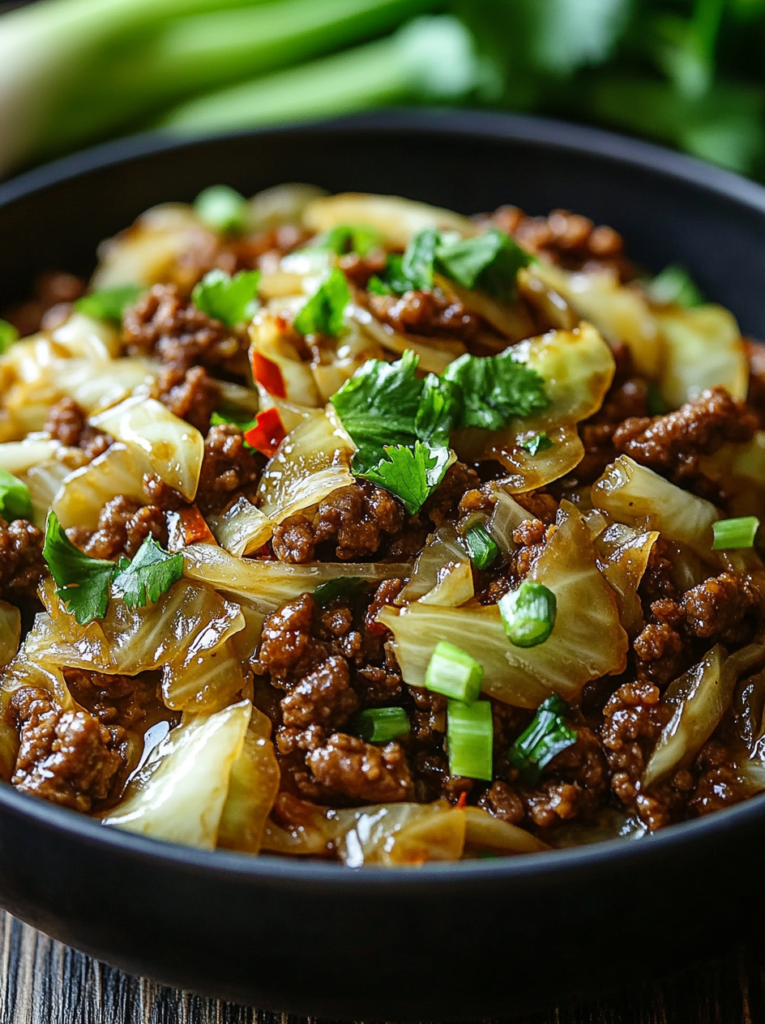
This Savory Soy-Glazed Mongolian Beef Bowl with Garlic Cabbage is so much more than a weeknight dinner—it’s the kind of dish that brings people to the table and keeps them there. It’s sweet, savory, deeply flavorful, and easy to customize for any diet or schedule.
What started as a takeout favorite becomes something personal and soulful in your own kitchen. And when you pair sticky glazed beef with tender garlic-sautéed cabbage and warm rice, it becomes a bowl full of comfort with a global twist.
So go ahead—make it once, and you’ll find yourself coming back to it again and again. And maybe, like me, you’ll make enough to leave a bowl on your neighbor’s porch.
Because food is better when it’s shared.
Don’t Miss These Flavor-Packed Favorites:
- Looking for another quick skillet meal? Try Savory Ground Beef Bell Pepper Stir-Fry
- Discover Asian-inspired flavors in our Savory Stir-Fried Beef Garlic Soy Bok Choy
- For a veggie-forward stir-fry, check out Healthy Chinese Ground Beef Cabbage Stir-Fry Stack
- Don’t miss our one-pan favorite Savory Onion Beef Fried Rice with Tender Beef Strips
Frequently Asked Questions About Mongolian Beef and Garlic Cabbage
What is special about Mongolian beef?
Mongolian beef stands out because of its sweet, sticky soy glaze that coats tender, thin slices of beef. Unlike other stir-fry dishes that rely on spicy or sour notes, Mongolian beef focuses on deep umami, garlic warmth, and caramelized richness from brown sugar. The beef is typically seared to give it a crispy exterior while staying juicy inside.
It’s quick, comforting, and makes you feel like you’re eating top-tier takeout—only better, because it’s homemade.
Craving other comforting stir-fry meals? Try this Savory Stir-Fried Beef Garlic Soy Bok Choy.
What is Mongolian beef sauce made of?
Traditional Mongolian beef sauce is made from:
Soy sauce
Brown sugar
Garlic
Ginger
Cornstarch slurry (for thickening)
Optional sesame oil or hoisin for added richness
The combination creates a glaze that thickens quickly and clings to every bite of beef, creating that signature glossy finish. It’s sweet and savory, with a subtle spice if you add red pepper flakes.
What is the difference between Mongolian beef and normal beef?
“Mongolian beef” usually refers to a specific style of dish—thinly sliced beef coated in a sweet soy glaze, often without vegetables except scallions.
Here’s how it differs from standard beef dishes:
Sweeter sauce (thanks to brown sugar)
Simpler ingredients (no complex spice blends)
Sticky glaze instead of thinner sauces or broths
Restaurant-inspired feel, even at home
Most “normal” beef stir-fries don’t use such a high sugar content and often include mixed vegetables or spices.
What is another name for Mongolian beef?
You won’t find many traditional synonyms, but depending on the restaurant or variation, Mongolian beef may be listed as:
Sweet soy beef
Asian beef bowl
Soy-glazed beef stir-fry
Some home chefs even call it “lazy bulgogi,” though that’s a different Korean dish altogether. While the flavors overlap in the sweet-and-savory category, Mongolian beef is uniquely its own dish—especially with garlic cabbage and jasmine rice in the mix.
Can I make Mongolian beef ahead of time?
Absolutely! Mongolian beef is perfect for meal prepping. The sauce keeps its bold flavor for days and reheats beautifully. Cook your beef and cabbage ahead, store your rice, and assemble when you’re ready.
Use compartment containers or meal kits to make lunch and dinner feel fast, fresh, and homemade every time.
